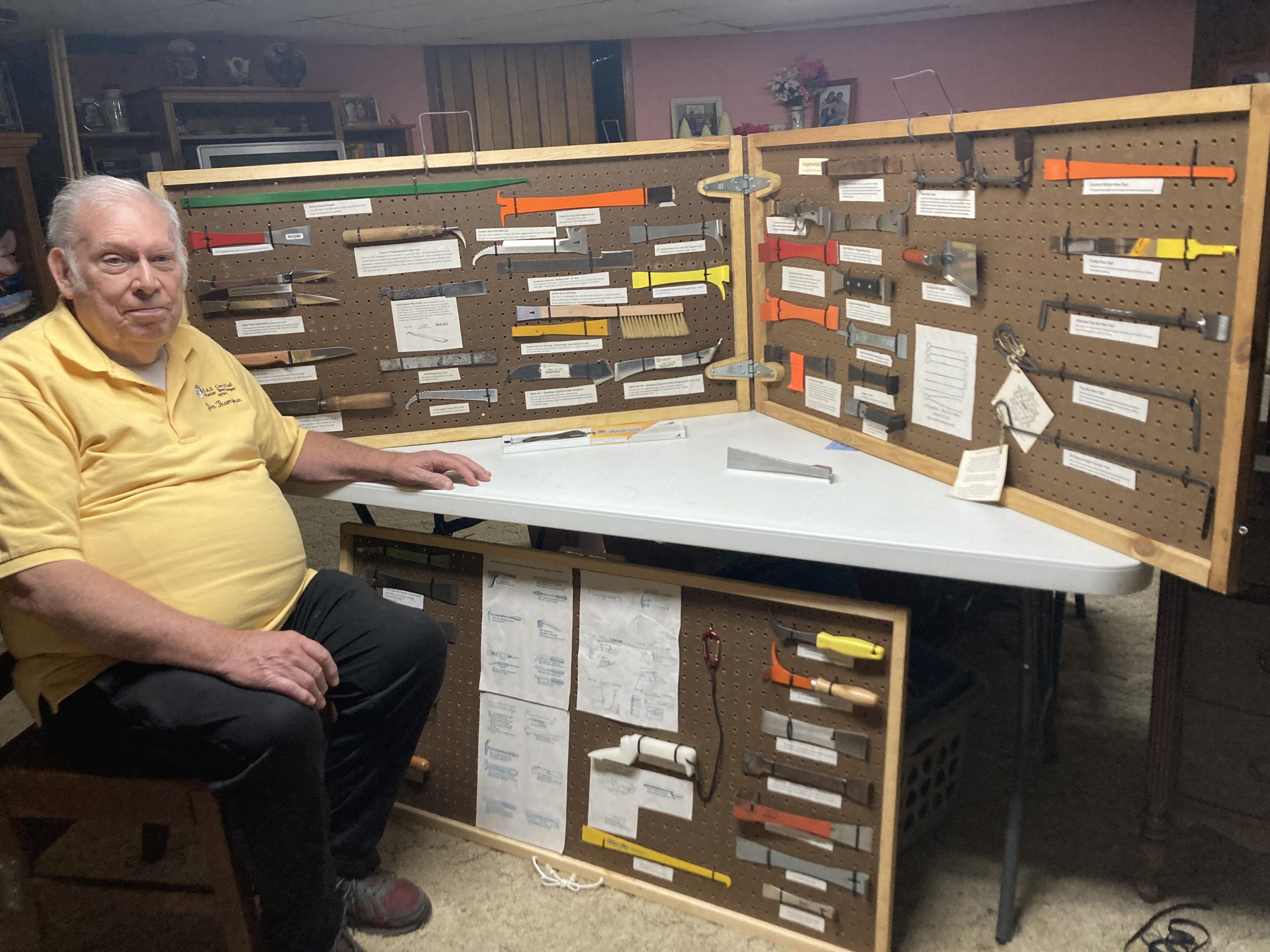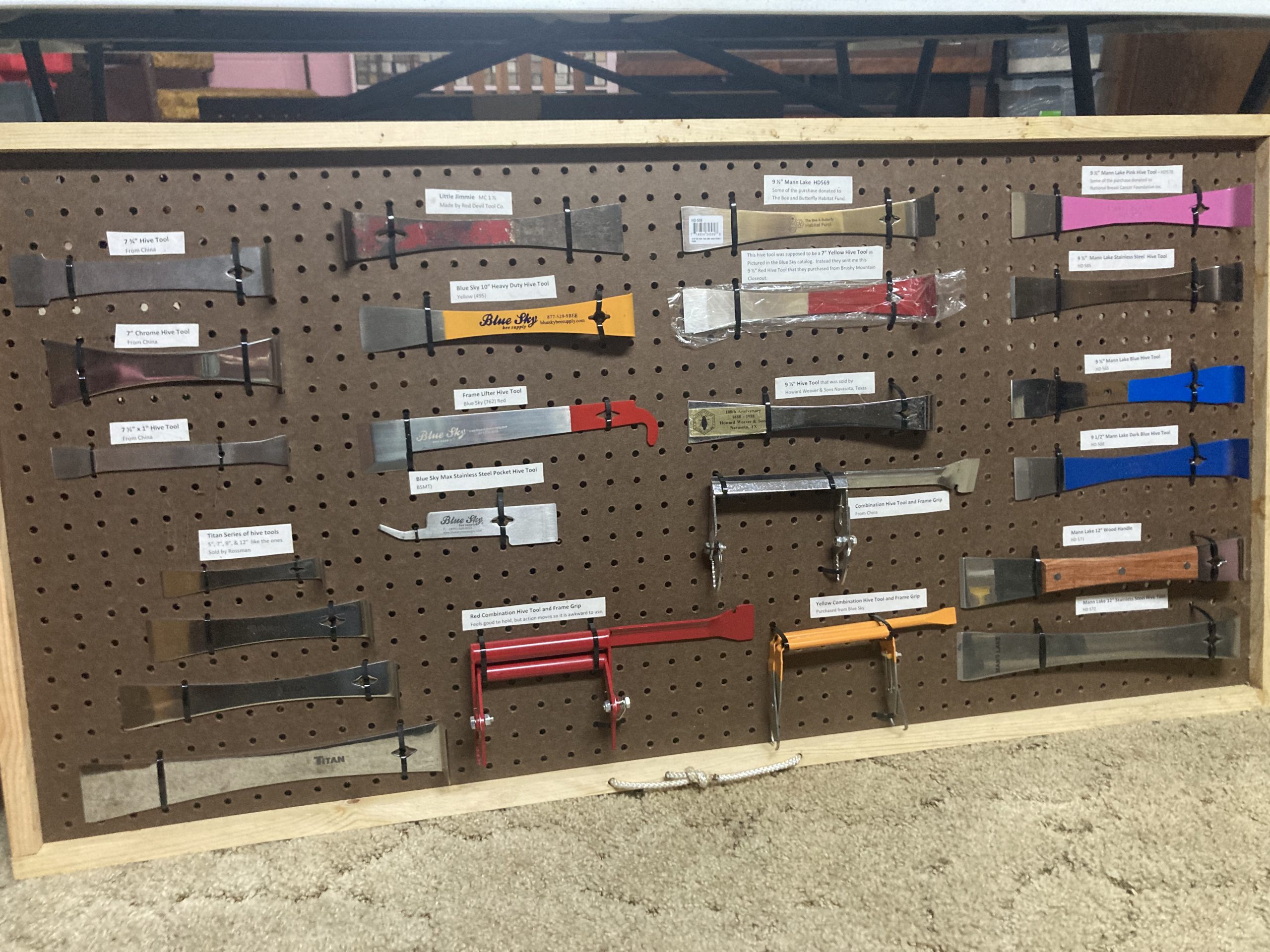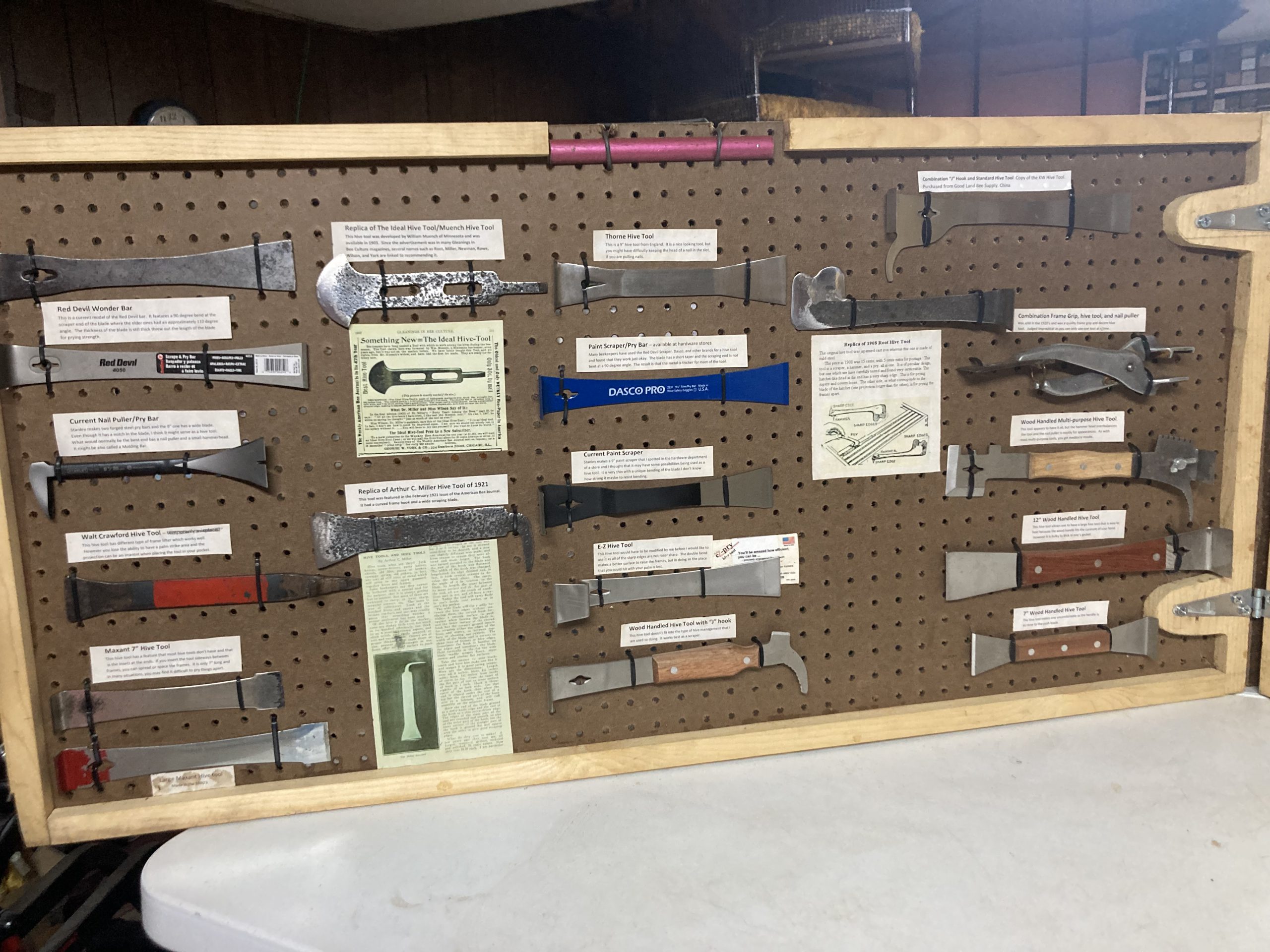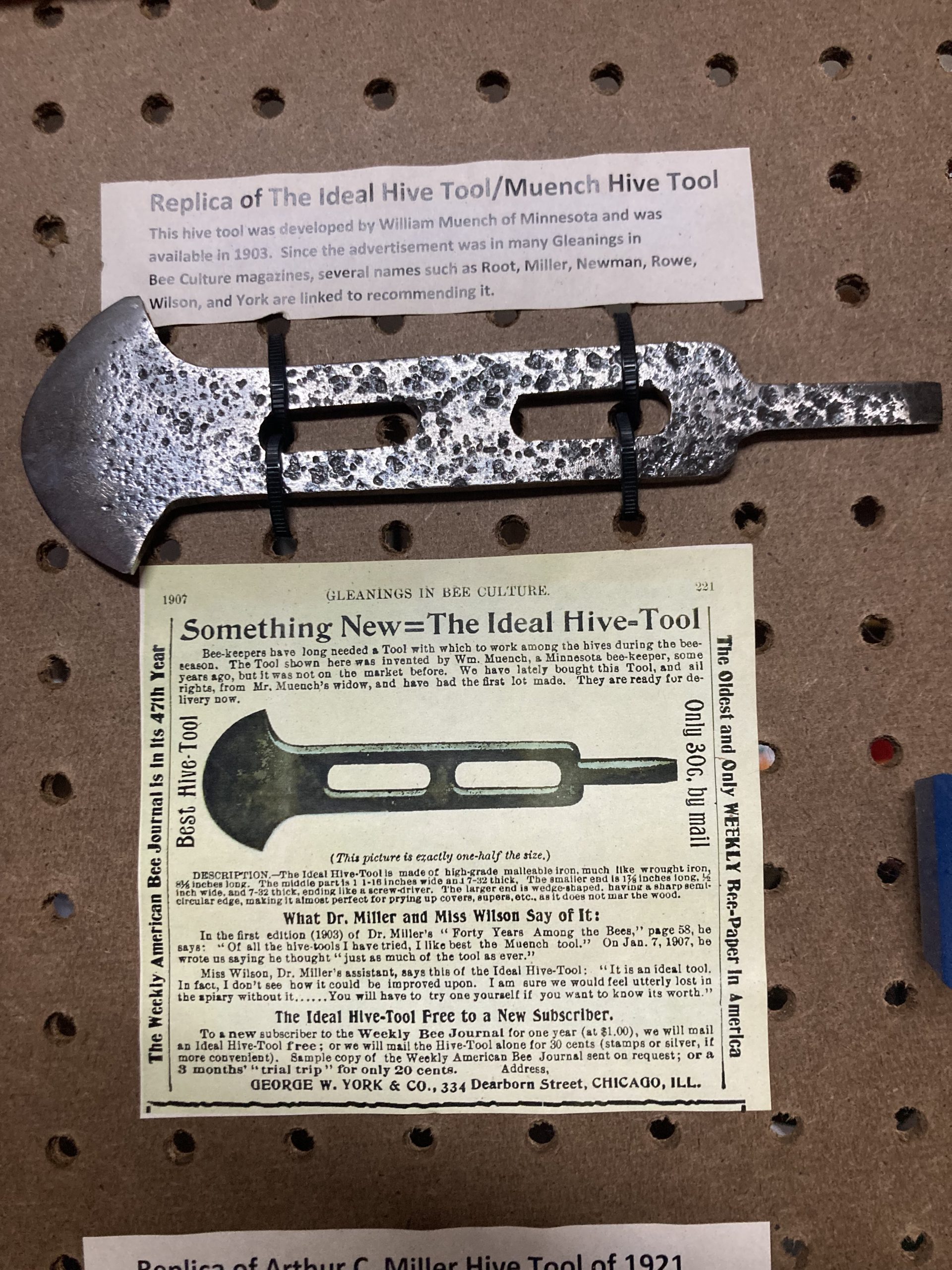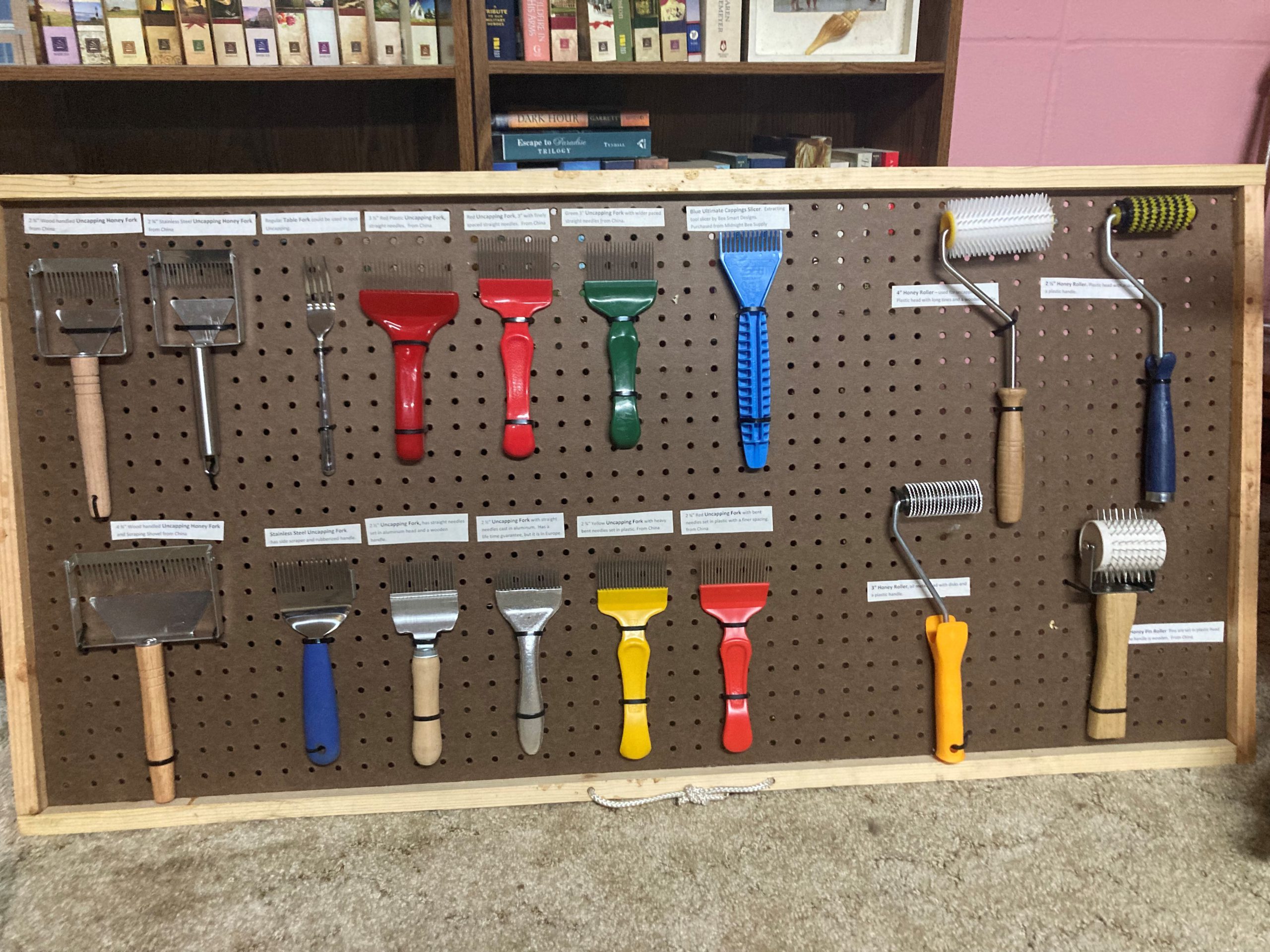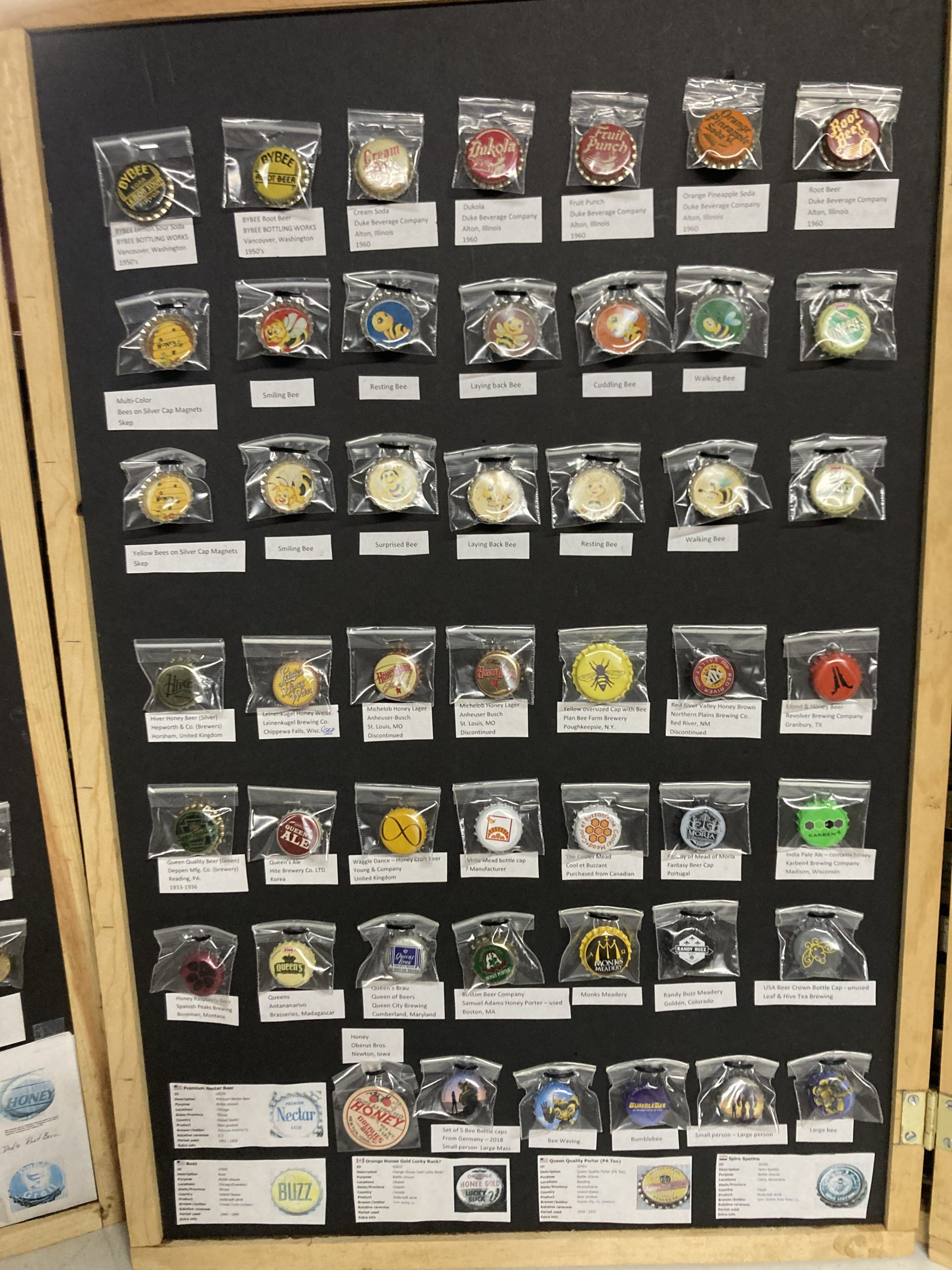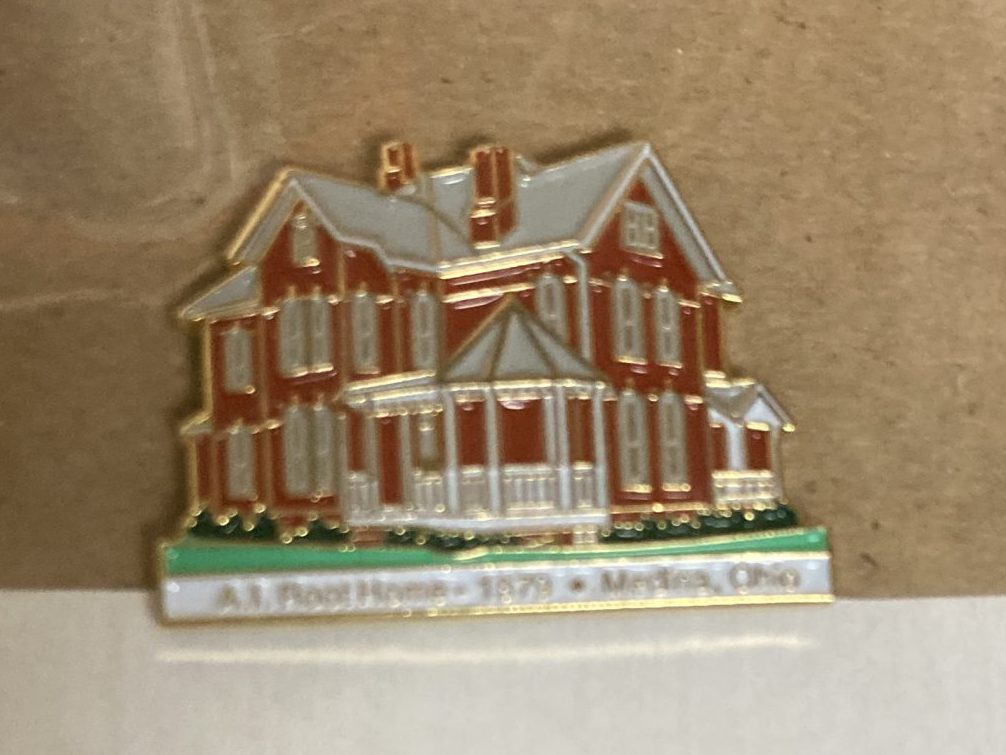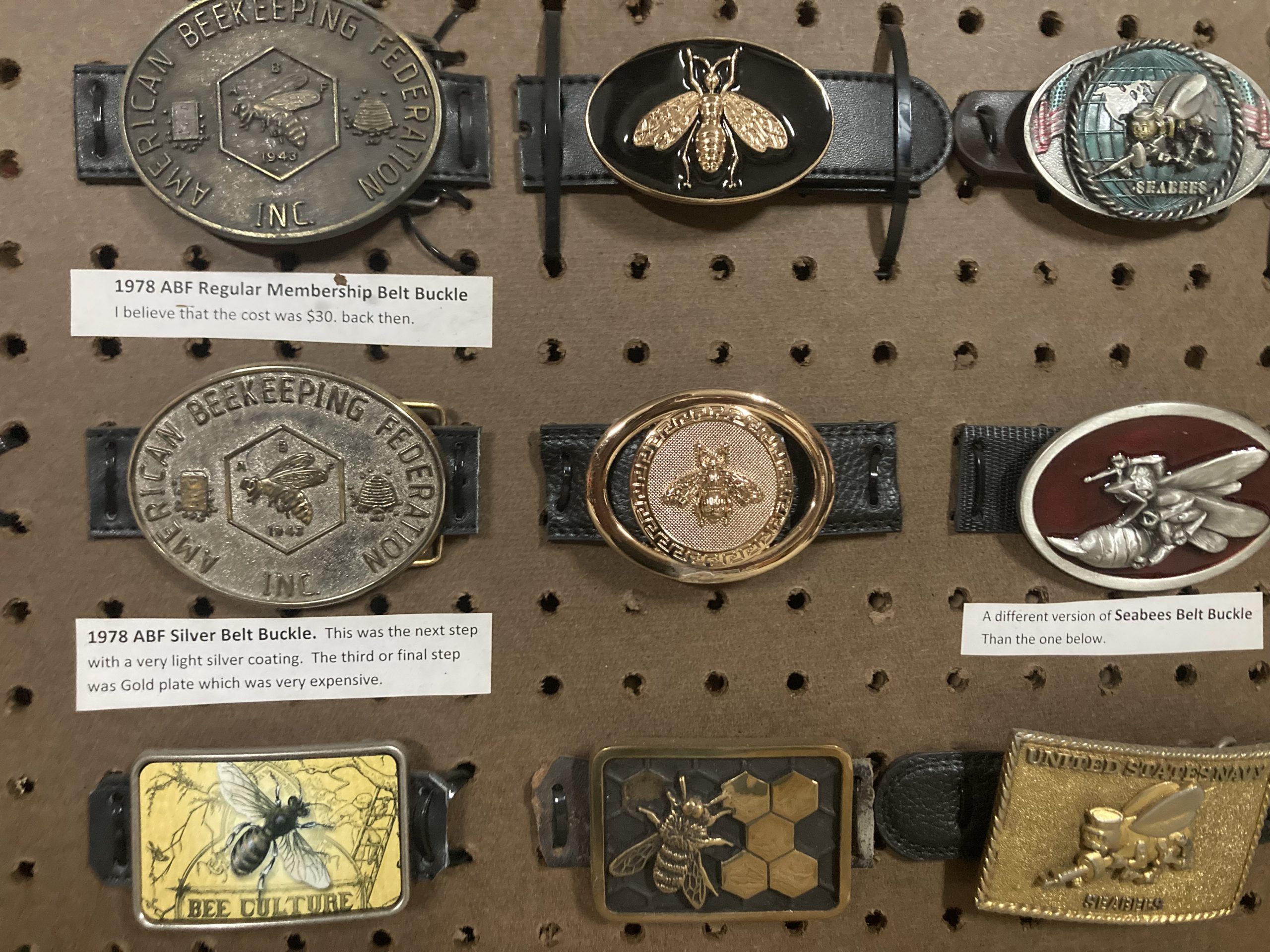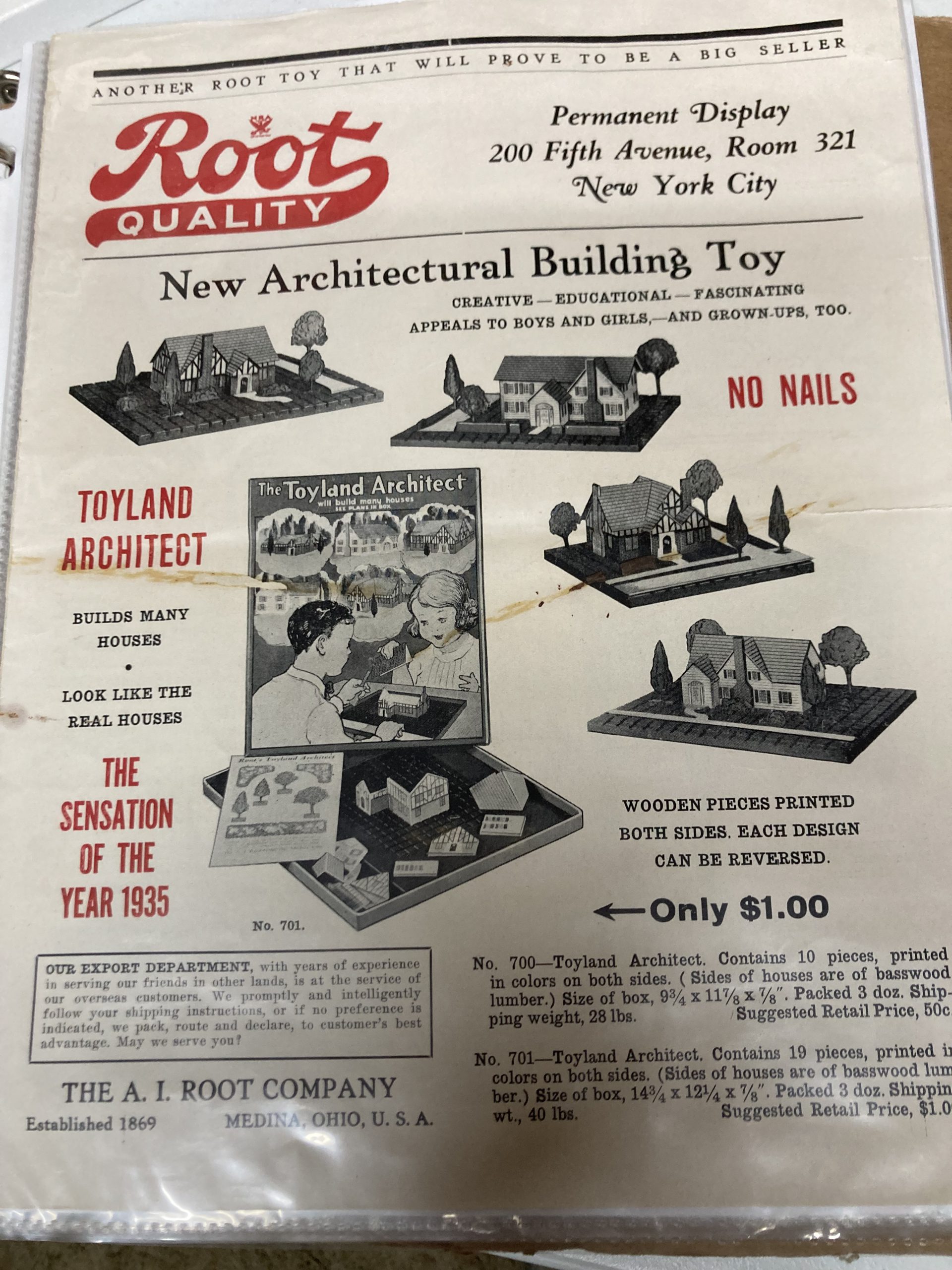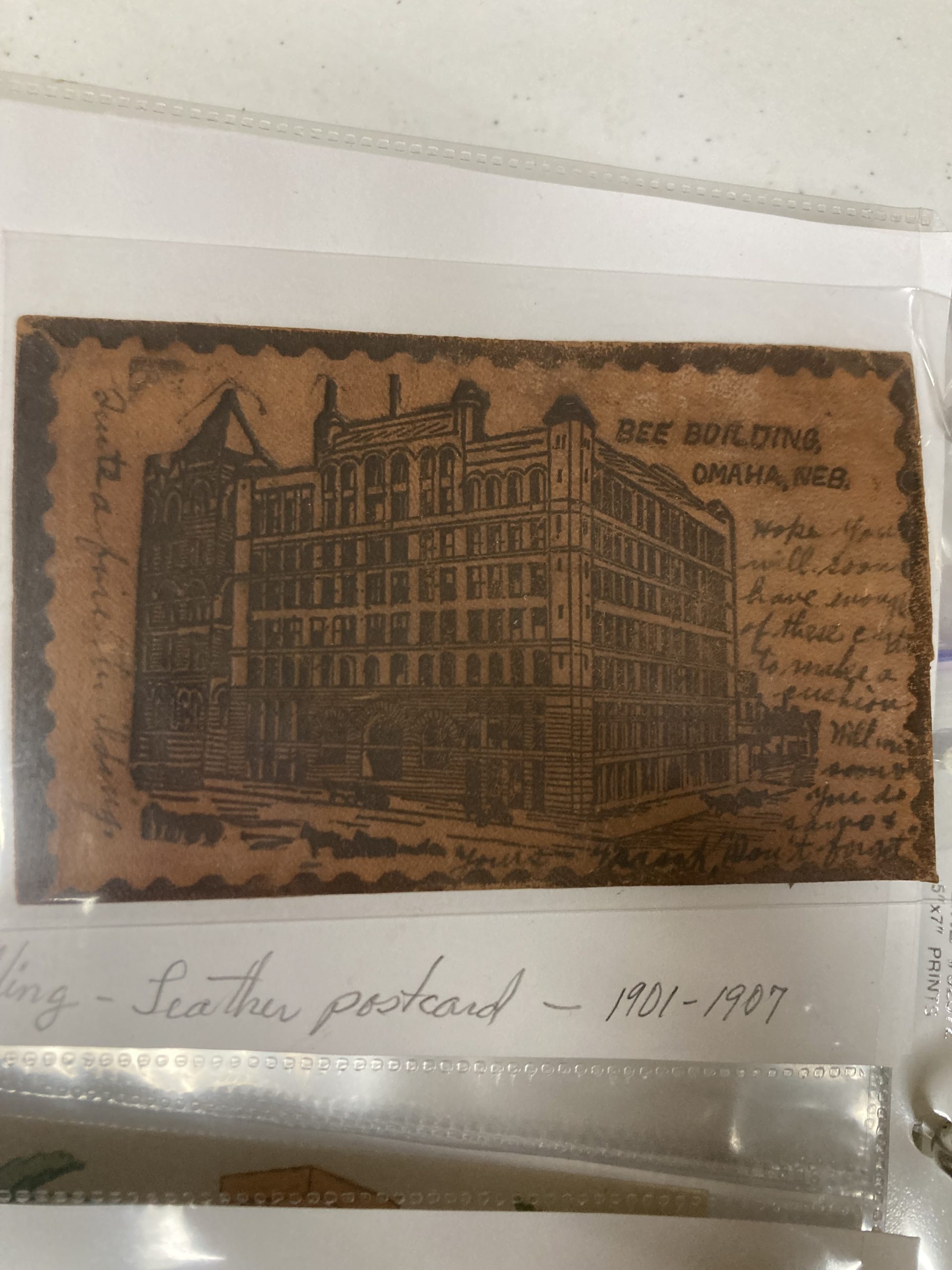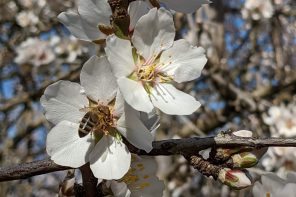By: Barb Bloetscher
Friends know James (Jim) Thompson as a beekeeper, EAS Master Beekeeper, Honey Judge, former Apiary Inspector, Chevy SSR (convertible truck with a super charged Corvette engine!), historian, cat lover, philatelist and collector of all things beekeeping, but they may not know his roots and how his star studded journey guided him to the knowledge he enjoys today.
As we sit in his round house for which he designed the basement, he showed me his immense collection of beekeeping equipment – smokers, hive tools, dove tailed hives, belt buckles and honey themed bottle caps, letters, postcards and cartoons. He explained his passion for beekeeping and how he began his sweet life in beekeeping.
Q: How and when did you become interested in beekeeping, Jim?
Jim: I have been interested in beekeeping since I was two years old when I removed the lids of a beehive at my uncle’s farm and stuck my head into it. He lived in Stockport, Iowa, which is very close to Hamilton, IL, where Dadant is headquartered. My uncle had some of Dadant’s early bee hives. I wasn’t afraid of them at all! I was curious to see what they were doing! My uncle taught me about beekeeping, then I acquired his when he passed away. I also liked working on cars. As a young teenager, I bought a Model A car and spent a lot of money putting a V-8 engine in it.
Q: What did you do next?
I joined the Army and was assigned to be an aircraft mechanic in the Transportation Unit. I repaired and restored downed airplanes so that they could be flown again. I was multi-engine rated. A week into the Army my dad was killed. He owned a construction company in Ames, Iowa. I was given a three day pass to visit my family. One of my uncles took over the company and sold my Model A for $100.
For 18 months in 1963, I was stationed in Alaska and in my free time on the Ski Patrol patrolling the slopes. I was rated “Black Diamond” which is the highest grade for skiers. We were at Fort Wainwright in Fairbanks where some U-2 Spy planes were stationed.
Q: Where did you go to college?
I grew up in Ames, Iowa so I went to college at Iowa State University and majored in Industrial Arts. The Army paid my tuition, but I had to work to pay for other expenses. I worked in a cafeteria loading dishes in the dishwasher. I knew I was doing okay as it took three people to unload it in the time that it took me to load it (laughs).
Q: What was your first job?
Wooster City Schools recruited me to teach Industrial Arts. Soon, I was assigned to work in OWE (Occupational Work Experience) with students who had problems adhering to the school’s program. They needed a more structured curriculum and a firm hand… I was it! (Chuckles) I trained them to excel in mathematics, English and work related occupations. I had to obtain certifications in the Summers to teach them English, math and history. They had me half day for every subject. It must have worked because the dropout rate was less than 2%.
Q: How long did you teach in Wooster City Schools?
33 years. I taught OWE for 19-20 years. Some students still contact me or remember me when they see me somewhere.
Q: You were in Wooster when all the Greats were here in Ohio. That must have been wonderful to be with them all.
Yes, Dr.’s James Tew, Larry Connor, Tom Sanford, Walter Rothenbuhler as well as Vic Thompson and Tom Ross were here. I became friends with many of them. It was a great time to be in Ohio! I took Larry Connor’s mail order class on beekeeping. He was the Extension Apiarist at OSU at the time.
In 1985, Dr. Rothenbuler invited Eva Crane to visit. What a thrill that was!
Q: You were a County Apiary Inspector too. What was it like being an Inspector back then?
I was the Wayne County Apiary Inspector for 17 years as well as the Holmes County Inspector for two of them. I used to have about 80 colonies. Some of them were infected with AFB so I became an Inspector to figure out where it was coming from. During my inspection years, I met and worked with the people at ATI (Agricultural Technical Institute) and the ones that associated with the beekeeping program, for example: John Chalk, Jim Tew, Mark Headings, Malcolm Tom Sanford, Tom Ross, Sherry Ferrell, Paul Jackson, John Root, David Heilman and others. We had to burn a lot of hives as AFB was everywhere. We were able to get the infection rate down to 2%.
Q: What advice do you have for beekeepers and County Apiary Inspectors regarding the Apiary Program?
You have to keep good records. You have to be able to trace back where the infected hives originated and where they were moved. Know who had problems with it and where the apiaries were located. Treat beekeepers with respect and teach them good beekeeping skills. No one ever refused us because we were helping them control AFB in their areas. We had good rapport with beekeepers.
You have to realize that everyone is going to have AFB in an apiary at one point. You have to know how to diagnose and burn it as soon as possible and you have to be out in the field working. Remember that the bee equipment belongs to the beekeeper.
Q: You were president of OSBA and are still their historian. When were you president?
I was president in 1985-86 for two terms. I was president before John Grafton’s first run as president (he was president two different times).
I still consider myself as OSBA’s Historian. I became an EAS Certified Master Beekeeper in 1994.
OSBA had some strong active members that moved it forward. They started the Ohio Honey Festival which originated in Lebanon then it was moved to Oxford in Hamilton County. The Honeyfest was started by Arnold Crabtree and the Conrads at Lithopolis (outside of Columbus, OH). The Ohio State Fair was the major center to educate people about honey bees, beekeeping and bee products. Half of the hall would house eight exhibits. The major intent was to sell honey at the fair. The Casdorphs (David and Alta) were the main exhibitors and had one entire section. The Conrads (Barry and Carmen) had another huge display further down the hall. It used to take 12 hours to judge all the honey! Florence Beathard would stay and keep me company as I would be there long into the night. At that time, 10 jars had to be judged for each individual display. Finally, Zale Maxwell allowed only three jars to be judged per entry. That really helped!
Q: Who were some of the Beekeepers and Bee Researchers who influenced you?
OH, so many! Arnold Murray, Arthur Korody from the Mansfield area gave me a lead on an old Root foundation Mill, which is in the OARDC Beekeeping Museum. Tom Ross introduced the Ross Rounds – they were tan then brown, but at first they were translucent. Tom was on ATI Advisory Committee at the same as me.
Jim Tew started me on honey judging in 1983 when he had to leave for a trip. He loaned me the equipment. Well, it stuck to me so I am still judging today! We used the Lovibond color grade, polariscope and refractometer. We still enjoy judging today!
Q: Tell me more about honey judging. How do you prefer to judge honey?
Well, in the laboratory we used a pfund color grader. The National Honey Board uses the color of honey to classify the honey, not to grade it. Honey should not be graded on its flavor because everyone has a different sense of taste. Instead, it should be graded on quality. I developed a transparent color grader which I give to those who finish the apprenticeship in Ohio.
Q: You have shown me your marvelous collection of beekeeping equipment. Do you have some that you are still looking for?
I just bought a Serbian hive tool, which I have been looking for five years. I am still looking for an Excaliber hive tool, made by Jim Fisher of Bee Quick, it was made of stainless steel and has a beveled type handle. People don’t keep things anymore; non-beekeepers don’t realize the value of these old tools and the history behind them.
Q: How long have you been collecting beekeeping equipment and memorabilia?
Well at least since the 1990’s.
Q: What advice can you offer to new beekeepers?
- Find a beekeeping club, or several that you like which provides good education and experience. That is so important to understand what we need to do to keep our bees healthy. Keep going to the meetings because you will never stop learning.
- Register your apiaries and go through the hives with the Inspector. You will learn a lot from them.
- Look for evidence of a queen.
- Know your diseases (and pests), symptoms and how to manage them.
- For Varroa mites, sample and test!
- Open your hives when needed to check on the health of the colonies. The frequency varies upon the season, location of colonies, amount of sun they are receiving and the reason for wanting to inspect them. About every three weeks is a good rule of thumb.






